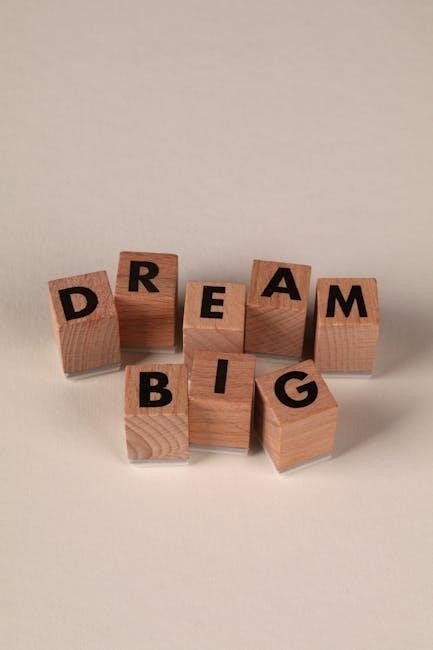
first grade sight words pdf
Sight words are common‚ high-frequency words that often don’t follow phonetic rules‚ making them essential for early readers to memorize. These words‚ like “the‚” “and‚” and “is‚” appear frequently in texts and are crucial for building reading fluency. First grade sight words are typically introduced in small‚ manageable groups to help young learners master them quickly. By recognizing these words instantly‚ students can focus on comprehension and enjoy reading with confidence. Sight words are foundational to early literacy and are often included in educational resources‚ such as PDF lists‚ for easy practice and reference.
1.1 What Are Sight Words?
Sight words are high-frequency words that appear regularly in texts but often don’t follow standard phonetic rules‚ making them challenging to sound out. These words‚ such as “the‚” “and‚” and “is‚” are recognized by sight rather than decoded. They are pre-determined and compiled into lists like the Dolch or Fry lists‚ which prioritize the most common words in children’s reading materials. Sight words are essential for building reading fluency because they allow students to read smoothly without pausing to decode unfamiliar words. Mastering these words is a foundational skill for early literacy and is often supported through practice tools like flashcards or printable PDF resources.
1.2 Importance of Sight Words in Reading Development
Sight words play a critical role in reading development by enabling students to recognize common‚ high-frequency words instantly. This recognition enhances reading fluency‚ allowing learners to focus on comprehension rather than decoding. Sight words also boost confidence‚ as early readers can quickly identify familiar words‚ making the reading process more enjoyable. Additionally‚ these words often don’t follow standard phonetic rules‚ so memorization is essential. By mastering sight words‚ students reduce the need to pause and sound out words‚ which can lead to frustration. This foundational skill builds a strong reading base‚ equipping learners with the tools to tackle more complex texts and fostering a lifelong love for reading.
1.3 Overview of First Grade Sight Words Lists
First grade sight words lists are curated collections of high-frequency words essential for early reading success. These lists are designed to gradually build a student’s reading vocabulary. The Dolch Sight Words list‚ for example‚ categorizes words by grade level‚ providing a structured approach. Similarly‚ the Fry Sight Words list offers a more extensive collection‚ including the most common 1‚. Many educators and parents use these lists to create flashcards‚ games‚ and activities. Printable PDF resources are widely available‚ making it easy to practice these words at home or in the classroom. These organized lists ensure that young learners can systematically master the words they need to become confident readers.

Benefits of Learning Sight Words in First Grade
Learning sight words enhances reading fluency‚ boosts confidence‚ and strengthens foundational literacy skills‚ enabling first graders to focus on comprehension and enjoy reading with greater ease and accuracy.
2.1 Improved Reading Fluency
Mastering sight words significantly improves reading fluency by allowing students to recognize common words instantly. This reduces the need to sound out each word‚ enabling smoother and more natural reading. As first graders become proficient‚ their ability to decode texts effortlessly enhances‚ making reading more enjoyable and less laborious. Improved fluency also boosts their confidence‚ encouraging them to tackle more complex materials. By memorizing these high-frequency words‚ students can focus on understanding the overall meaning of the text rather than struggling with individual words. This foundational skill is crucial for developing a strong reading foundation and fostering a lifelong love for reading;
2.2 Enhanced Vocabulary Development
Learning sight words contributes significantly to vocabulary development by introducing students to common‚ high-frequency words. These words often serve as building blocks for more complex vocabulary. By mastering sight words‚ students gain the ability to recognize and understand words they encounter frequently in texts. This exposure helps expand their overall vocabulary‚ as they learn to associate words with meanings and contexts. Sight words also provide a foundational knowledge that makes it easier for students to decode and comprehend unfamiliar words as they progress in their reading journey. This early exposure to a wide range of words fosters a stronger command of language and communication skills.
2.3 Boosted Confidence in Early Readers
Mastery of sight words significantly boosts confidence in early readers by providing a sense of accomplishment. Recognizing familiar words helps students feel more secure when reading aloud or silently. This confidence spills over into other areas of learning‚ encouraging a positive attitude toward reading and academics. When children can decode and understand texts more easily‚ they are more likely to engage with reading materials and take pride in their progress. Celebrating milestones‚ such as mastering a set of sight words‚ further reinforces this confidence. The ability to read effortlessly fosters a love for reading and a belief in their own capabilities‚ setting the stage for future academic success.

Popular Sight Words Lists for First Grade
First-grade sight words lists are curated collections of high-frequency words essential for early literacy. These lists‚ often in PDF formats‚ provide structured practice for young learners‚ promoting recognition and fluency in reading.
3.1 Dolch Sight Words List

The Dolch Sight Words List‚ created by Edward William Dolch‚ is a widely recognized collection of high-frequency words essential for early reading development. Designed for grades K-3‚ the list includes for first grade‚ carefully selected based on their frequency in children’s literature. These words‚ often irregular and non-phonetic‚ are meant to be memorized to improve reading fluency. The Dolch list is divided into grades to align with students’ learning progression‚ making it a valuable resource for teachers and parents. Available in PDF formats‚ these sight word lists provide structured practice‚ enabling young learners to master foundational vocabulary and build confidence in their reading abilities.
3.2 Fry Sight Words List
The Fry Sight Words List‚ developed by Dr. Edward Fry‚ is an expanded and modern collection of high-frequency words essential for reading proficiency. It includes 1‚‚ divided into grades‚ with the first-grade list forming the foundation for early literacy. Unlike the Dolch list‚ Fry’s list prioritizes words based on their frequency in modern texts‚ ensuring relevance and practicality. These words‚ often irregular and non-phonetic‚ are crucial for rapid recognition and fluent reading. The Fry list is widely used in schools and is available in PDF formats‚ making it an accessible resource for teachers and parents to create flashcards‚ worksheets‚ and practice activities tailored to young learners.
3.3 Comparing Dolch and Fry Sight Words
The Dolch and Fry sight words lists are foundational for teaching reading but differ in approach. Dolch’s list‚ created in the 1940s‚ focuses on irregular‚ non-phonetic words essential for early reading. Fry’s list‚ developed in the 1950s‚ expands to 1‚‚ prioritizing frequency in modern texts. Both lists are widely used‚ but Fry’s is more comprehensive and updated. Dolch’s list is shorter‚ with for grades K-3‚ while Fry’s extends through grade 6. Both lists are available in PDF formats‚ making them accessible for teachers and parents to create flashcards‚ worksheets‚ and activities. Understanding their differences helps educators choose the best resource for their students’ needs.

Teaching Strategies for Sight Words
Effective strategies include using flashcards‚ interactive games‚ and hands-on activities. Multi-sensory approaches‚ like seeing‚ saying‚ writing‚ and using words in sentences‚ enhance retention and engagement for young learners.
4.1 Introducing Sight Words in Small Groups
Introducing sight words in small groups allows for personalized attention and tailored instruction. Teachers can select a few words at a time‚ ensuring students grasp each before moving on. This method fosters engagement and reduces overwhelm. By using visual aids like flashcards or word cards‚ educators can present words clearly. Interactive activities‚ such as matching games or word-building exercises‚ make learning enjoyable. Small groups also enable immediate feedback‚ helping students correct misconceptions early. This approach supports differentiated instruction‚ catering to varying learning paces and styles. Regular review and reinforcement in small groups ensure mastery and confidence in recognizing sight words.
4.2 Using Flashcards for Sight Word Practice
Flashcards are an effective tool for practicing sight words‚ offering a visually engaging and interactive way to reinforce memorization. Each card typically features a sight word on one side‚ allowing students to test their knowledge by recalling the word from memory. Flashcards can be used in various drills‚ such as quick recognition exercises or matching games‚ to keep practice dynamic. They are especially useful for visual learners‚ as the clear presentation helps students associate the word’s appearance with its meaning. Additionally‚ flashcards can be customized to focus on specific words or groups‚ making them adaptable to individual learning needs. Regular use of flashcards builds familiarity and confidence‚ helping students recognize sight words instantly; This method is particularly effective when combined with other activities‚ such as games or scavenger hunts‚ to create a well-rounded practice routine.
4.3 Incorporating Games and Activities
Incorporating games and activities into sight word practice makes learning engaging and fun for first graders. Sight Word Bingo is a popular choice‚ where students match words to their cards‚ fostering quick recognition. Memory Match games‚ where students pair sight words‚ also enhance memorization. Scavenger hunts involving sight words hidden around the classroom or at home encourage active learning. Interactive activities like sight word races‚ where students identify words flashed on a screen‚ add an element of excitement. Additionally‚ incorporating movement‚ such as jumping or clapping while reciting sight words‚ creates a kinesthetic learning experience. These games not only make practice enjoyable but also reinforce retention and build confidence in young readers.
4.4 Multi-Sensory Approaches to Learning
Multi-sensory approaches engage multiple senses‚ enhancing sight word retention for first graders. Writing words in sand or shaving cream combines tactile and visual learning. Magnetic letters allow students to build words‚ reinforcing muscle memory and phonetic awareness. Singing songs with sight words integrates auditory and kinetic learning‚ making memorization fun. Using colored markers or highlighters to emphasize patterns in sight words can also aid visual learners. These hands-on‚ interactive methods create a dynamic learning environment‚ helping students connect with sight words on multiple levels and fostering long-term retention. By incorporating touch‚ sound‚ and sight‚ multi-sensory approaches make sight word practice both effective and enjoyable for young learners.

Sight Words Flashcards and Printable Resources
Sight words flashcards and printable resources‚ like PDF worksheets‚ provide engaging tools for practice. Flashcards help memorize words‚ while printable games and activities reinforce learning in fun ways‚ ensuring progress.
5.1 Creating Sight Word Flashcards
Creating sight word flashcards is a simple yet effective way to help students memorize high-frequency words. Start by writing each sight word clearly on an index card or a piece of cardstock. Use bold letters or larger fonts for better visibility. You can also add a picture or definition on the back for visual learners. Organize the cards into sets based on difficulty or learning progress. For durability‚ laminate the cards or use digital tools to create virtual flashcards. Flashcards can be used in games‚ practice drills‚ or as a quick review tool. This method ensures active engagement and repetition‚ key to mastering sight words effectively.
5.2 Printable Sight Word Worksheets
Printable sight word worksheets are valuable tools for reinforcing sight word recognition and spelling. These worksheets often include activities such as tracing‚ matching‚ and fill-in-the-blank exercises. They are designed to engage students in active learning while providing structured practice. Many worksheets are themed to match classroom decor or student interests‚ making them more appealing. Educators and parents can find a wide variety of free or paid resources online‚ tailored to first-grade level. These sheets can be customized to focus on specific sight words‚ allowing for personalized learning. Regular use of sight word worksheets helps build confidence and fluency‚ ensuring students master these essential words effectively. They are also convenient for homework or independent practice‚ offering a flexible learning option.
5.3 Sight Word Bingo and Matching Games
Sight word bingo and matching games are engaging activities that make learning fun and interactive. Bingo games involve calling out sight words while students mark them on their cards‚ promoting quick recognition. Matching games‚ such as pairing words with their duplicates or images‚ enhance memory and recall. These activities are ideal for group settings‚ fostering teamwork and healthy competition. They also provide immediate feedback‚ helping students identify areas for improvement. Sight word bingo and matching games are versatile‚ as they can be adapted to different skill levels and themes‚ keeping students motivated and excited about learning. They are excellent tools for reinforcing sight word mastery in a playful way.

Sight Word Activities for Hands-On Learning
Sight word scavenger hunts‚ writing words in unique ways‚ and magnetic letter building are engaging hands-on activities. These methods make learning interactive‚ helping students connect with sight words physically and visually‚ enhancing retention and understanding through active participation.
6.1 Sight Word Scavenger Hunts
Sight word scavenger hunts are a dynamic and engaging way to help students practice recognition. Teachers can place sight word cards around the classroom or school‚ creating a list for students to find and identify. This activity promotes active learning‚ as students search for words in their environment. It also enhances memory retention by connecting sight words with physical movement and exploration. Scavenger hunts can be tailored to different skill levels‚ allowing students to work individually or in pairs. The excitement of the hunt adds a fun element‚ making learning sight words an enjoyable experience. This method encourages teamwork and builds confidence in early readers.
6.2 Writing Sight Words in Unique Ways
Writing sight words in unique ways engages students creatively and reinforces memory. Techniques like tracing words in sand‚ shaving cream‚ or rice provide tactile experiences‚ making learning interactive. Using magnetic letters or letter stamps allows students to build words physically‚ enhancing recognition. Incorporating art‚ such as writing words with crayons or markers in different colors or fonts‚ adds a visual element. Students can also write sight words on whiteboards or chalkboards‚ pairing movement with practice. Additionally‚ writing words in unique contexts‚ like creating short sentences or stories‚ helps connect sight words to meaning. These methods make practice enjoyable and cater to diverse learning styles‚ ensuring students stay engaged and motivated. They also help build confidence in writing and spelling skills.
6.3 Sight Word Building with Magnetic Letters
Using magnetic letters is an engaging and hands-on way to help first graders master sight words. Students can build words by arranging letters on a metal surface‚ such as a whiteboard or baking sheet. This tactile activity reinforces letter recognition and word formation. Magnetic letters allow learners to manipulate and rearrange letters‚ fostering an understanding of word structure. Teachers can introduce one word at a time‚ guiding students to spell it correctly. This method also helps students recognize letter patterns and memorize high-frequency words. Magnetic letter activities can be paired with sight word lists from PDF resources‚ making practice both fun and effective for young learners. This approach supports kinesthetic learning and enhances retention of sight words in a playful manner.

The Role of Parents in Sight Word Practice
Parents play a vital role in reinforcing sight word learning at home. Using resources like first grade sight words PDFs‚ they can create flashcards and practice regularly with their child. Consistent review and positive reinforcement help build confidence and mastery. By collaborating with teachers and staying involved‚ parents ensure their child’s success in recognizing and spelling sight words‚ laying a strong foundation for reading fluency and overall academic growth.
7.1 Daily Practice Routines
Parents can establish simple yet effective daily routines to practice sight words. Using first grade sight words PDFs‚ they can create flashcards or printable worksheets. Allocating just 5-10 minutes each day for consistent practice helps reinforce memory. Activities like reading the words aloud‚ tracing them‚ or incorporating them into short sentences make learning engaging. Parents should encourage their child to read sight words without sounding them out‚ fostering instant recognition. Tracking progress on a chart or list can motivate children to stay committed. Regular practice not only builds fluency but also strengthens their confidence in reading and spelling.
7.2 Using Sight Words in Everyday Conversations
Incorporating sight words into daily conversations is a powerful way to reinforce learning. Parents can casually use these words in sentences‚ such as “Let’s read a book” or “The cat is sleeping.” Pointing out sight words during conversations helps children connect the words to real-life contexts. For example‚ while grocery shopping‚ parents can say‚ “Look‚ that sign says ‘the’!” Using first grade sight words PDFs‚ parents can create flashcards or games that involve conversations. Encouraging children to repeat the words or use them in their own sentences strengthens their recognition and retention. This approach makes learning seamless and fun‚ blending education with everyday interactions.
7.3 Parent-Teacher Collaboration
Collaboration between parents and teachers is vital for effective sight word practice. Teachers can provide parents with first grade sight words PDFs‚ ensuring everyone uses the same materials. Regular communication‚ such as updates on progress or challenges‚ helps align efforts. Parents can share insights into their child’s learning style‚ enabling teachers to tailor instruction. Together‚ they can set goals and celebrate milestones‚ fostering a supportive learning environment. This partnership ensures consistency and reinforces the importance of sight words in early literacy. By working together‚ parents and teachers create a strong foundation for their child’s reading success‚ making the learning process more enjoyable and effective.

Assessing Sight Word Mastery
Regular quizzes and progress monitoring help assess sight word mastery. Teachers use these tools to track accuracy and adjust instruction‚ ensuring students meet learning goals effectively.
8.1 Regular Sight Word Quizzes
Regular sight word quizzes are a vital tool for assessing mastery. Teachers can use flashcards or worksheets to test students’ ability to recognize and read sight words quickly and accurately. Quizzes can be conducted weekly or bi-weekly to track progress. They help identify which words students have mastered and which require additional practice. Informal assessments‚ such as one-on-one checks or small group activities‚ also provide valuable insights. The results of these quizzes guide instruction‚ allowing teachers to adjust their strategies and focus on challenging words. Over time‚ consistent quizzing builds confidence and reinforces memory‚ ensuring students are well-prepared for reading success.
8.2 Monitoring Progress Over Time
Monitoring progress over time is essential to ensure students are mastering sight words effectively; Teachers can use progress charts or digital tools to track each student’s growth. By regularly reviewing assessment data‚ educators can identify patterns and areas where students may need extra support. This ongoing monitoring allows for timely interventions‚ such as additional practice or differentiated instruction. Celebrating small milestones also motivates students to stay engaged. Over time‚ consistent tracking helps build a strong foundation in sight word recognition‚ which is critical for overall reading development. This approach ensures that no student falls behind and that all learners meet their full potential.
8.3 Adjusting Instruction Based on Assessment
Assessment results provide valuable insights into students’ sight word mastery‚ guiding instructional adjustments. Teachers can identify areas where students struggle and tailor lessons accordingly. For example‚ if a group shows difficulty with certain words‚ additional practice or alternative teaching methods can be implemented. Small group instruction‚ interactive games‚ or one-on-one support may be necessary. Progress data also helps differentiate instruction‚ ensuring each student receives targeted practice. By adjusting teaching strategies based on assessments‚ educators can address individual needs‚ reinforce weak areas‚ and accelerate learning. This flexible approach ensures that all students progress toward sight word mastery‚ building confidence and reading proficiency over time.

Celebrating Sight Word Milestones
Celebrating sight word milestones boosts confidence and motivation in young learners. Classroom parties‚ certificates‚ and sharing successes with parents reinforce achievements‚ fostering a love for reading and learning.
9.1 Classroom Celebrations
Celebrating sight word milestones in the classroom is a powerful way to motivate students and acknowledge their progress. Teachers can organize small parties or special activities when a student masters a set of words. Recognition through certificates‚ stickers‚ or verbal praise enhances confidence. Interactive games‚ such as sight word bingo or scavenger hunts‚ can be used to celebrate while reinforcing learning. Displaying achievements on a classroom “Word Wall” or “Sight Word Superstars” chart creates a sense of accomplishment. These celebrations not only reward effort but also foster a positive learning environment‚ encouraging students to continue practicing and striving for success.
9.2 Reward Systems for Motivation
Reward systems are effective tools to motivate students in mastering sight words. Incentives such as stickers‚ stars‚ or small prizes can be awarded when students reach specific milestones. A “Sight Word Store” where students can “purchase” items with earned points adds excitement. Progress charts or “Sight Word Thermometers” allow students to visually track their achievements‚ fostering a sense of accomplishment. Reward systems should be consistent and tied to clear goals‚ ensuring students stay engaged and motivated. These positive reinforcement strategies help create a love for learning and encourage students to take ownership of their sight word practice.
9.3 Sharing Success with Parents
Sharing a child’s sight word milestones with parents fosters collaboration and reinforces learning. Teachers can send home progress reports or sight word lists‚ highlighting mastered words. Regular communication through emails‚ parent-teacher meetings‚ or digital platforms keeps parents informed. Celebrating successes together builds enthusiasm and encourages continued practice at home. Providing parents with resources‚ such as sight word PDFs or activity ideas‚ empowers them to support their child’s learning. This partnership strengthens the child’s confidence and reinforces the importance of sight words in their educational journey.
Mastering first grade sight words is key to building strong reading skills. With consistent practice and the use of resources like PDFs‚ students can achieve fluency and confidence.
10.1 Summary of Key Points
First grade sight words are essential for early reading development‚ boosting fluency and confidence. These high-frequency words‚ often irregular‚ must be memorized for instant recognition. The Dolch and Fry lists are widely used‚ providing structured learning paths. Teaching strategies include small group introductions‚ flashcards‚ games‚ and multi-sensory approaches. Parents play a vital role through daily practice and incorporating words into conversations. Assessments like quizzes and progress monitoring help tailor instruction. Celebrating milestones with rewards and sharing success with parents motivates learners. Consistent practice‚ along with resources like PDF lists‚ ensures mastery. Sight words lay a strong foundation for lifelong reading skills and academic success.
10;2 Encouragement for Continued Practice
Consistent practice is key to mastering first grade sight words. Encourage students to view learning as an adventure‚ celebrating small victories and building confidence. Parents and teachers should create a supportive environment‚ making practice fun with games‚ flashcards‚ and interactive activities. Positive reinforcement and rewards motivate learners to stay engaged. Integrating sight words into daily routines‚ such as reading together or using them in sentences‚ reinforces memory. Remind students that each word learned brings them closer to becoming fluent readers. With dedication and enjoyment‚ the journey of sight word mastery becomes a path to lifelong reading success and a love for learning.
Leave a Reply
You must be logged in to post a comment.